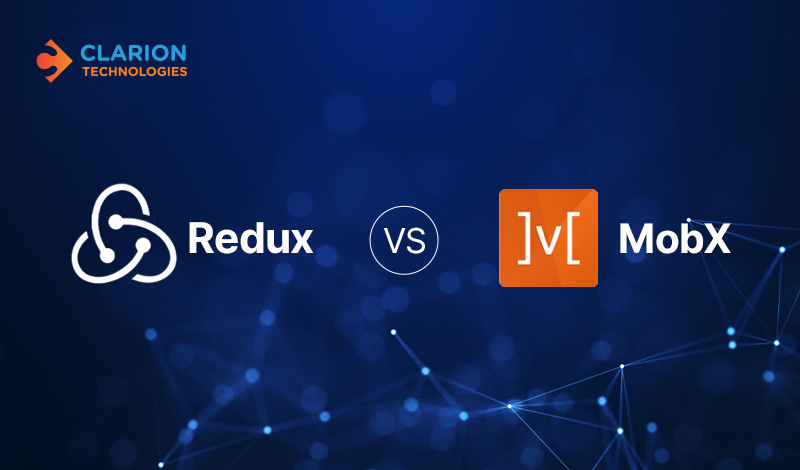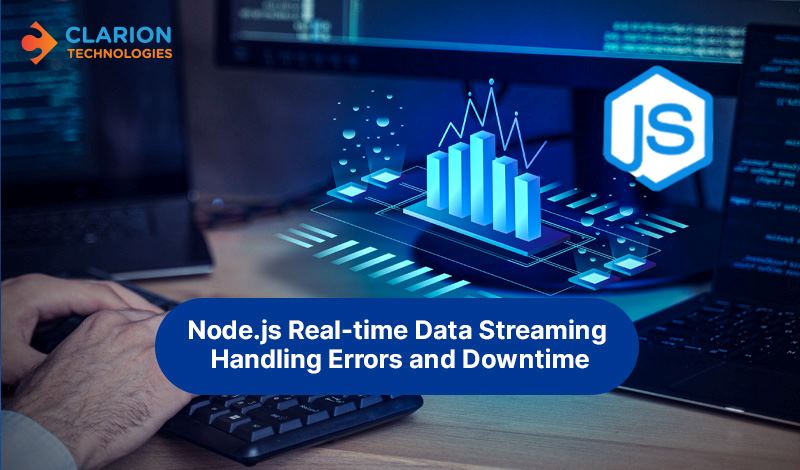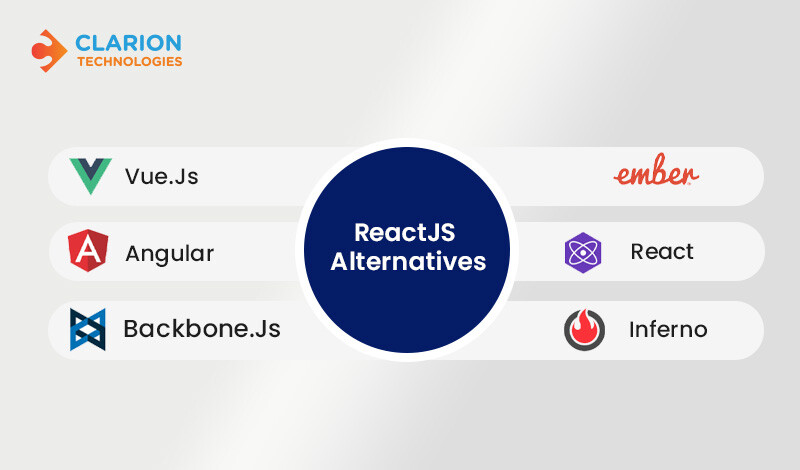Explore how to build data management support for applications using Redux and MobX.
Blog Overview: In this blog we delve into handling data management and its complexities with state management libraries like Redux and MobX. We compare these two libraries to examine their features and scalability for businesses looking to build data-supported applications.
What is Redux?
Redux is used for JavaScript apps as a predictable state container. Simply put, it helps the data flow in one direction, so it is easy to understand how changes happen in an application. This is what is described as predictability, which helps react developers manage state effectively, improving code clarity and maintainability.
What is MobX?
MobX is a state management library that helps manage data in applications. Hire react developers to write clean code with mobX. It helps automatically track changes and dependencies. This ensures smooth rendering and gives freedom in organizing the application state. It helps make testing more accessible.
Why does React Need A State Management library solution?
State management in an application can be like having a memory bank where vital information is stored. This helps different parts of the app share data and save time by avoiding unnecessary work, like recalculating things or fetching data repeatedly from storage.
Comparison Between Redux vs Mobx - How is Redux Different from Mobx?
Redux and mobX are both state management libraries commonly used in React applications, but they have different approaches and philosophies. Here's how they differ:
#1. Redux vs MobX: State Management Philosophy:
Redux follows a strict and predictable pattern known as "Flux architecture," where state changes are centralized and predictable. It encorages immutability and pure functions.
MobX, on the other hand, embraces a more flexible and reactive approach. It allows for direct mutations of state and focuses on making state management as simple and efficient as possible. Know why choose react native for building healthcare app.
#2. Redux vs MobX: State Mutation:
In Redux, state mutations are handled through reducers, which are pure functions that take the current state and an action and return a new state. Redux emphasizes immutability, meaning that each state change results in a new state object.
MobX allows for direct mutation state. Changes to observables are automatically detected, triggering re-renders in components that depend on them. This can lead to a more imperative style of programming compared to Redux's functional approach.
#3. Redux vs MobX: Predictability vs Flexibility:
Redux prefers predictability and maintainability. Its strict pattern and single-store architecture make it easier to reason about state changes in large applications.
MobX values flexibility and simplicity. Its reactive nature and support for multiple stores make it well-suited for projects where simplicity and ease of use are prioritized over strict architectural patterns.
#4. Redux vs MobX: Performance:
Redux can consume more memory and CPU resources because it creates new state objects for every state change. This can lead to performance overhead in large applications.
MobX is optimized for performance, as it allows for direct mutation of state and only updates components that are affected by state changes. Computed values are also efficiently updated, optimizing performance even further.
#5. Popularity of Redux Vs Mobx:
In Github, redux has 60.4k stars and mobX has 27.1k stars as per the latest update in 2024. Redux remains a widely used state management library in large-scale applications. It's a familiar choice for many reactive native developers who have experience with flux architecture.
MobX remains an attractive choice for react developers seeking more flexibility. Its simplicity ease of use and direct mutation of state makes it a popular option for small scale projects with dynamic data requirements. Know about other frameworks like react vs react native for mobile app development.
#6. Redux and MobX : Learning curve
Redux has deeper learning curve because of its strict patterns which takes time to grasp. MobX is simple and flexible and easier for developers aware of object oriented programming languages.
Bothe the libraries have vibrant communities with documentation, tutorials, and resources. Redux has a large ecosystem with a wealth of support and resources. The MobX community remains active and supportive of developers seeking flexible state management.
Redux is highly scalable for large apps with its centralized store and predictable data flow. However, managing state in Redux can be complex as apps grow, requiring an understanding of architecture and best practices. MobX allows for scalability, but maintaining predictability and managing complexity becomes a challenge for large apps.
|
Aspect |
Redux |
MobX |
|---|---|---|
|
State Management |
Follows Flux architecture, centralized state changes |
Embraces flexible and reactive approach |
|
State Mutation |
Handled through reducers, emphasizes immutability |
Allows direct mutation of state, reactive updates |
|
Predictability vs Flexibility |
Prefers predictability and maintainability |
Values flexibility and simplicity |
|
Performance |
May consume more memory and CPU resources |
Optimized for performance, efficient updates |
|
Popularity |
60.4k stars on GitHub, widely used in large-scale apps |
27.1k stars on GitHub, favored for flexibility |
|
Learning Curve |
Deeper learning curve, strict patterns |
Easier learning curve, simpler and flexible approach |
|
Developer Communities |
Large ecosystem with extensive support |
Active community, supportive of flexibility |
|
Scalability |
Highly scalable, centralized store |
Scalable but may require careful management |
What Should You Choose Redux or MobX?
When deciding between redux and mobX, consider the scale and scope of the project. Large projects will require Redux for its predictability and centralized state management while mobX can be used with small scale project where flexibility and ease of use is important.
Why Hire React Developers to Develop Apps with Data Management Support
Using Redux in React:
Redux is well-established and widely adopted in the React ecosystem, including React. Businesses with large and complex applications may benefit from Redux's predictability state management and centralized data flow. Redux's single-store architecture and strict pattern can provide clarity and maintainability in large team projects, making it easier for developers to understand and reason about state changes. Redux's ecosystem is rich, with many middleware and tools for debugging and enhancing developer productivity.
Redux's predictable state changes time-travel debugging and can help track and debug state changes in finance and ecommerce platforms. However, redux has some boilerplate code and needs a learning curve for new developers unaware of its patterns and concept.
Using Mobx in React:
Mobx is flexible reactive approach to state management can help businesses looking for rapid development and simplicity. Businesses with smaller or simple applications may find MobX's direct mutation of state and automatic reactivity efficient. MobX's support for multiple stores allows for a modular state organization, which can benefit applications with different features or modules. MobX's ability to compute derived values from observables can lead to performance optimizations and streamlined development workflows. MobX's flexibility can be particularly useful in dynamic environments where requirements may change frequently or require rapid prototyping and iteration. However, MobX's more permissive approach to state management may require careful design and discipline to maintain code maintainability and prevent unintended side effects.
What are the Use cases for Redux vs. MobX
Use cases for Redux
E-commerce applications: Redux can be helpful in ecommerce applications where there's a need to manage complex shopping cart states, user authentication, and order processing. The centralized store in Redux helps maintain consistency across various components, ensuring a seamless shopping experience.
Financial applications: In financial applications where accuracy and predictability are crucial, Redux's strict state management pattern can be invaluable. It provides a transparent and auditable record of state changes, making it easier to track transaction balances and other financial data.
Social networking apps: Social networking applications often involve managing a large amount of dynamic data, such as user profiles, posts, comments, and likes. Redux's single-store architecture simplifies the management of this data, enabling efficient updates and rendering across different parts of the application.
Enterprise Resource Planning (ERP) Systems: Redux can offer a structured approach to state management for businesses requiring comprehensive ERP systems to manage various operations. It facilitates the integration of different modules, such as inventory management, human resources, and accounting, while ensuring data consistency and integrity.
Real-time Collaboration tools: Redux can be suitable for real-time collaboration tools such as project management platforms or collaborative document editors. Its centralized state management enables data synchronization across multiple users and devices, ensuring everyone sees the latest updates in real-time.
Use Cases for MobX:
Prototyping and MVP Development: MobX's simplicity and flexibility make it ideal for rapid prototyping and minimum viable product (MVP) development. It allows developers to iterate quickly and experiment with different state management approaches without being constrained by rigid patterns or boilerplate code.
Interactive Gaming Applications: In gaming applications where performance and real-time updates are critical, MobX's reactive nature can be advantageous.
Content management systems: It can be used to build CMS where users need an intuitive user interface for managing images, articles, and other multimedia contexts.
Conclusion:
For effective data management support for applications, you require a company that has expertise in react development services. Focus on clean data management practices and tools to build applications that meet user needs. Hire react developers to stay ahead with emerging technologies, evolving data management, and to implement best practices. Outsource our developer or a team to get best results!





